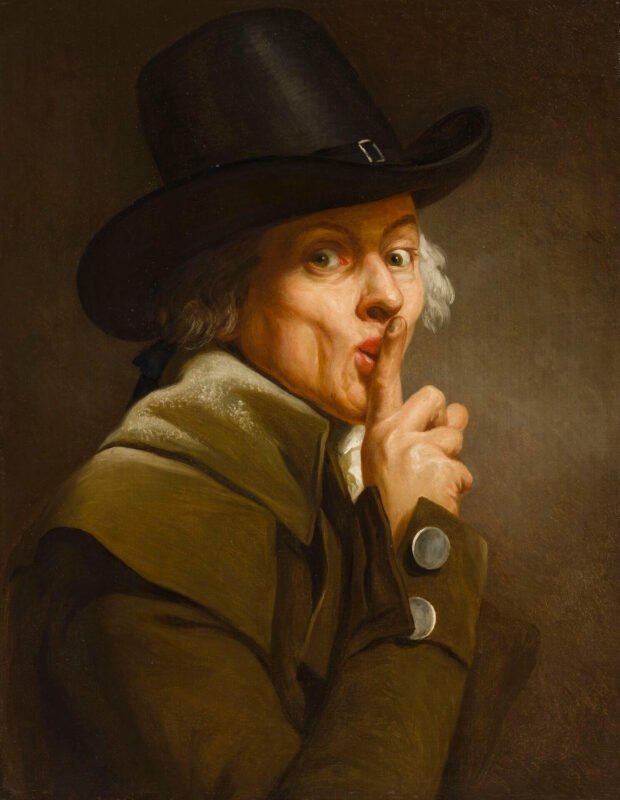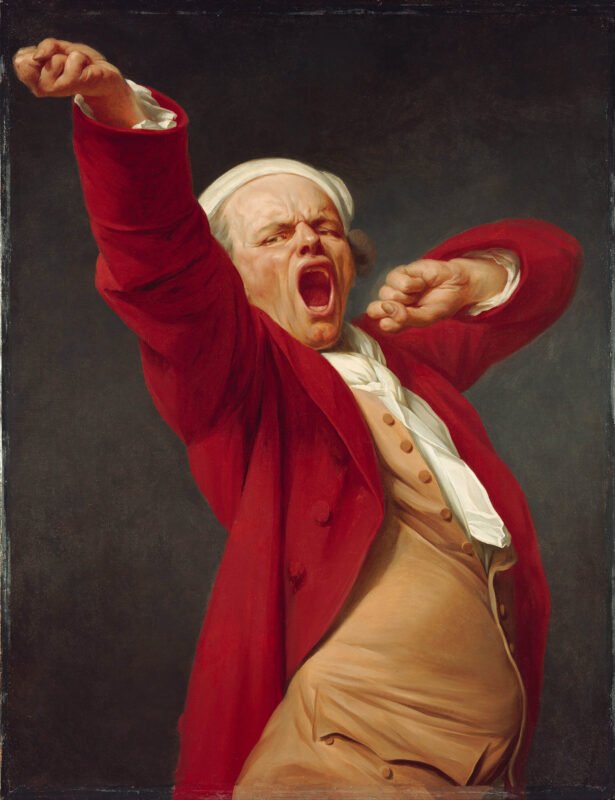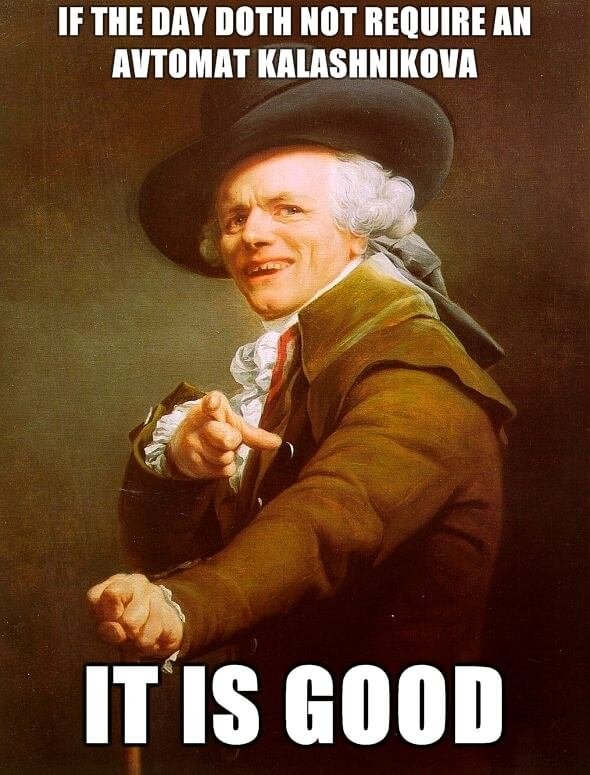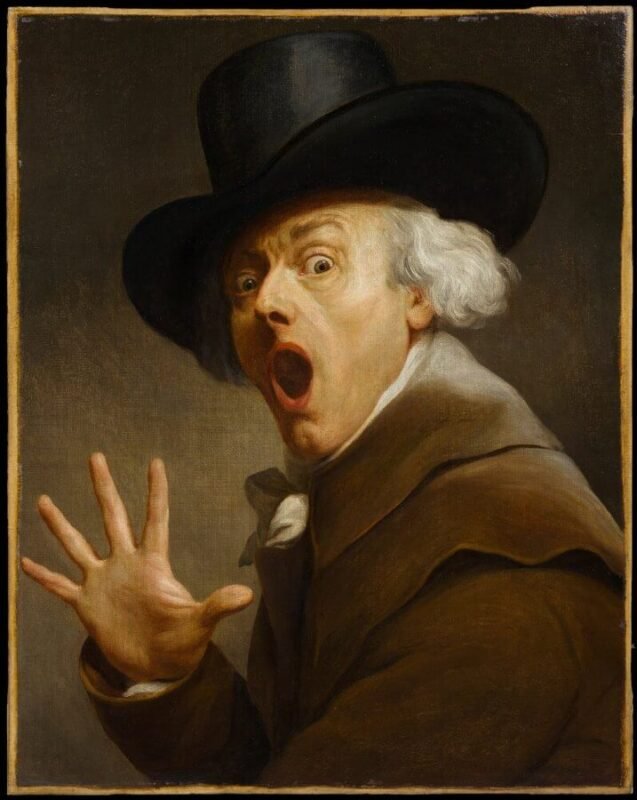A Noble Beginning: Ducreux’s Early Life and Education
Born in Nancy, France in 1735 into an artistic family, Ducreux received his foundational training from his father, Charles Ducreux. He later refined his technique in Paris under the mentorship of Maurice Quentin de La Tour, a renowned pastel portraitist and court painter. These early influences grounded Ducreux in the classical tradition while also planting the seeds of his later experimental approach.

His career gained momentum after he painted a portrait of Marie Antoinette before her arrival in France. Impressed by his talent, she named him her official portraitist, a title that provided prestige and unique access to the royal court. Despite this formal recognition, Ducreux’s work diverged sharply from the decorative and restrained aesthetic popular in aristocratic circles.
Portraiture That Speaks: Emotion and Experimentation
At a time when portraiture typically idealized its subjects, Ducreux took a radically different path. Fascinated by physiognomy, the belief that facial expressions reveal inner character, he painted figures in moments of exaggerated emotion—laughing, yawning, shouting, or gesturing dramatically.

His unconventional self-portraits showcased emotions rarely depicted in 18th-century art, challenging the notion of portraits as mere records of status or beauty. Ducreux’s compositions engaged viewers on a psychological level, elevating everyday human expression into fine art.
Self-Portrait as Performance
Ducreux’s self-portraits are theatrical, witty, and deeply human. In works like Self-Portrait, Yawning and Self-Portrait as a Mocking Man he abandons formal convention and instead captures the essence of fleeting human expression. These were not random experiments—they were carefully studied gestures intended to provoke thought and emotional resonance.

By turning the act of portrait-making into a form of personal performance, Ducreux anticipated later artistic movements that explore identity as a construct. His work suggests that portraiture can serve not just as a mirror, but as a stage.
Revolutionary Survival: Navigating a Changing France
Despite his ties to the royal court, Ducreux managed to endure the political upheaval of the French Revolution. Remarkably, he adapted his career in the wake of aristocratic decline and even found favor with Napoleon Bonaparte. This resilience can be attributed to the universal, human-centered quality of his work, which resonated across political and social boundaries.
A Surprising Digital Renaissance
In the 21st century, Ducreux’s work experienced an unexpected revival through the internet. One of his expressive self-portraits, known as Le Discret went viral as the basis for the Archaic Rap meme. This humorous trend combined classical portraiture with modern rap lyrics written in mock-Elizabethan English, creating a bizarre and entertaining cultural crossover.

The meme gained traction on platforms like Reddit and Tumblr, introducing Ducreux’s dramatic visual language to an entirely new audience. What began as a subversive 18th-century approach to portraiture ended up resonating in today’s meme culture, where performance and irony reign supreme.
Mastery in Technique and Expression
Beyond his expressive poses, Ducreux was a technical master. His use of oil paint, careful chiaroscuro, and detailed facial rendering display a deep understanding of anatomy and light. Unlike many of his contemporaries, Ducreux employed a minimalist background, drawing the viewer’s focus entirely to the figure’s expression.
His portraits often feature a tight compositional frame and dark, neutral settings—elements that intensify the psychological immediacy. He balanced technical refinement with emotional authenticity, creating works that are both visually arresting and intellectually stimulating.
Legacy: Ahead of His Time
Today, Ducreux is increasingly recognized as a forerunner to modern artistic trends. His work aligns with movements such as Expressionism, Performance Art, and Conceptual Portraiture—long before these labels existed. By portraying emotion as central to identity, he subverted classical ideals and offered a radically different approach to visual storytelling.

Ducreux’s portraits resonate in today’s culture of self-expression, social media, and meme-driven humor. They challenge traditional notions of dignity and remind us that vulnerability, humor, and theatricality have always had a place in art.
Conclusion: Why Ducreux Still Matters
In a digital age driven by self-presentation, curated identities, and visual storytelling, Joseph Ducreux’s portraits feel strikingly contemporary. His work invites us to reflect on authenticity, performance, and the expressive potential of the human face.
Though long overlooked, Ducreux’s paintings continue to surprise, amuse, and inspire. They demonstrate how even centuries-old canvases can connect with the present—and how a single expressive moment can echo across time.

